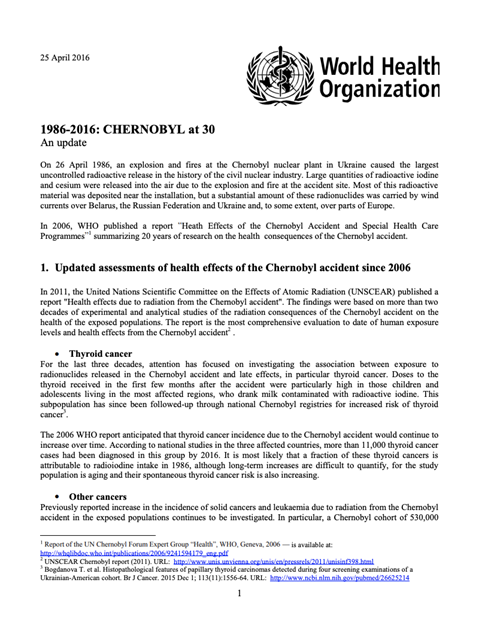1986-2016: CHERNOBYL at 30
An update

Overview
On 26 April 1986, an explosion and fires at the Chernobyl nuclear plant in Ukraine caused the largest uncontrolled radioactive release in the history of the civil nuclear industry. Large quantities of radioactive iodine, cesium, and other radionuclides were released into the air due to the explosion. Most of it was deposited near the area surrounding the installation, but a substantial amount of radionuclides was carried by wind currents over Belarus, the Russian Federation and Ukraine and, to some extent, over parts of Europe. The health of the affected populations was put at risk due to the exposure to radiation. For the vast majority of people, doses of radiation were as low as the natural background radiation and the main detriment for their well-being was due to the adverse psychological, social and economic impacts of the accident and implemented countermeasures. However, among young children and adolescents who were exposed to radioactive iodine through contaminated food and milk in 1986, an increase of thyroid cancer incidence was reported. By 2006, more than 5000 cases of thyroid cancer were diagnosed among those who were children at the time of the exposure. By 2015, the total number of cases in the three affected countries has reached 20,000 (UNSCEAR, 2018). Long-term health impact in people affected by Chernobyl is monitored by the WHO Collaborating Centres in Ukraine and the Russian Federation. Main concern for their well-being is reported to be due to the adverse psychological, social and economic impacts of the accident.
Current update was prepared at the mark of the 30 years since Chernobyl in 2016. The Update summarizes the state of knowledge on the long-term health consequences of the accident.
